As winter slowly crawls along, most fly fishers are thinking ahead to warmer days on the water. During this anticipation period, thoughts of mayflies, stoneflies, and caddis hatches of epic proportions are often on the mind. And let’s face it, a hatch dense enough to suffocate anyone standing within the cloud of insects is an experience many anglers dream of. While I too dream of the upcoming hatch season, I also begin to think about other natural events which occur on my home waters here in central Pennsylvania. While it’s no longer any secret, there is one event that can create some of the season’s best fly fishing action, and it has nothing to do with emerging insects. It’s the sucker spawn.
Although many anglers look down upon the “ugly” white sucker, they play an important part in many a trout’s ecosystem. During the still-lean early spring, the sucker spawn briefly provides trout with a smorgasbord of protein, which triggers a trout feeding frenzy that can provide some of the most intense fly fishing you’ll encounter this coming season.
In Pennsylvania, the white sucker is the most common sucker species found in the state. Outside of my home state’s borders, the white sucker is widespread, with a natural range that spans northern Canada to Florida, the uplands of eastern North America, and west to the Plains region. Today, the white sucker is found in over 40 of the contiguous United States.
The white sucker is a spring spawner. According to the PA Fish and Boat Commission, white suckers begin spawning when water temps reach 50 degrees Fahrenheit. For my home waters, I’ve witnessed spawning beginning in March and extending into late May. Sucker eggs are often a light golden color to a pale yellow. One of the most popular patterns for this event is called a sucker spawn—which is a simple pattern featuring several clumps of yarn tied onto a hook shank in order to imitate a sucker egg cluster. However, I’ve found that any egg pattern (any color closely matching the natural eggs) and size will produce during this event. Personally, I use a #16 eggstacy tied with the color “sweetcorn.”

Common spawning sites for white sucker are much like that of trout, which include shallow river sections with good current and spawning gravel. It’s common while walking a stream to hear commotion on the water, only to see the backs of spawning suckers working a shallow riffle or tailout. If you’re fortunate enough to see spawning suckers, there’s a chance trout are also positioned below, feeding at a feverous pace. If you’re able to locate a sucker spawning site, commit it to memory or log it in your angling journal, as there’s an excellent chance of finding pods of spawning suckers in the same location for years to come.
Trout will often move away from their regular feeding lies to locate spawning sucker beds. As an example, for the last 5 years I’ve witnessed a mass trout migration (within a short stretch of a local limestone stream) every year during the spawn. One of my favorite, most productive 50-60-yard stretch of water becomes vacant during the sucker spawn. I’ve even stomped and kicked around rocks and bank edges to spook trout, but nothing appears. Then, as I continue up to the head of the riffle, I’ll hear or see nervous water created by spawning suckers. Below the suckers will be a large school of trout stacked like cordwood, aggressively competing for each drifting egg. This isn't a common occurrence on all trout streams, but I have seen it on numerous occasions throughout the last several seasons. If you’re lucky enough to stumble on a similar scene, it’s amazing to witness.
Depending on water levels, spawning suckers easily spook, so a stealthy approach is important. If you can get into casting position and keep the spawning action in play (without spooking the pod), trout often put down their guard while gorging on eggs. The presentation, on the other hand, usually doesn’t need to be perfect while pods of trout are feeding. Fierce competition between feeding trout creates a scenario of indiscriminate feeding as trout try to out jockey each other for each floating glob of protein. This competition can create a fast and furious experience, as trout will move good distances (vertically and horizontally) to feed. I’ve witnessed trout lifting 20 inches off stream bottom to take my egg pattern near the surface immediately after presenting the fly on the water. It's important to have line and leader control the moment the egg pattern enters the water. Both Euro and indicator tactics will work but it is vital to maintain as little slack as possible. That bears repeating: takes often occur the moment the egg lands on the water, so be ready.
It’s important to note that finding spawning suckers isn’t an everyday occurrence—timing is crucial and there’s certainly some luck involved, as well. But if you do find yourself within range of spawning suckers, they’re worth seeking out, as you may encounter some of the year’s best fishing opportunities.








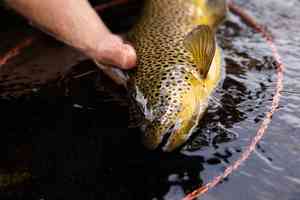





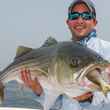
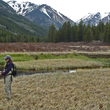



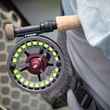




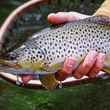






Comments
Kevin replied on Permalink
Great article. One of the best days I’ve ever had on the water was at a remote hike-in lake from the already remote Igloo Lake lodge in Labrador where we found suckers spawning all around us at the mouth of a stream. So many eggs in that clear water that it looked like the riverbed was covered in sand. And at the outflow into the lake the water was boiling with massive brook trout feeding like frenzied sharks. For hours we battled it out with 6-8 pounders taking egg sucking leeches till our arms hurt. Good memories.
Pages